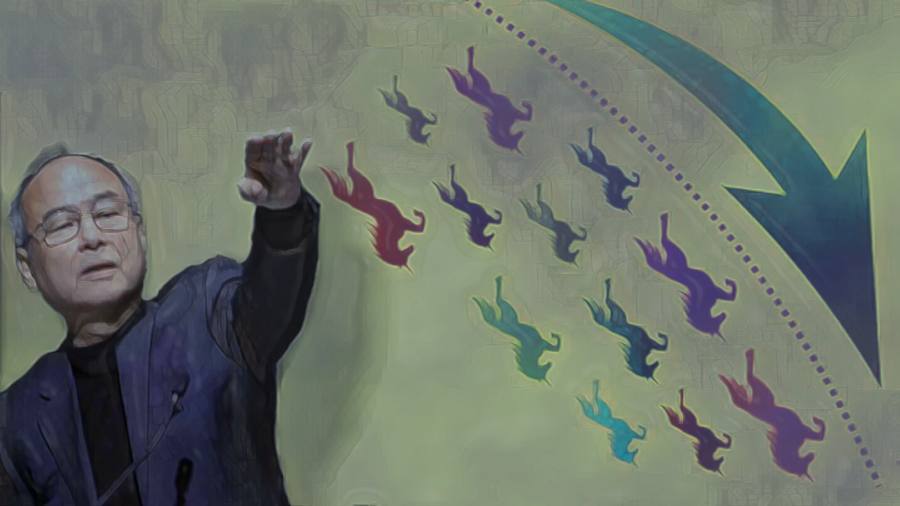
Receive free Arm Ltd updates
We’ll send you a myFT Daily Digest email rounding up the latest Arm Ltd news every morning.
There are many reasons not to buy Arm Holdings. Here are a few:
-
It’s not Nvidia.
-
From some angles its IPO looks nearly as expensive as Nvidia.
-
It’s not à la mode. Technology investment goes in fashions and Arm’s strengths — efficiency, portability, interoperability — are considered unattractive now that power is limitless, antitrust lawyers are extinct and no one goes outside.
-
Cornerstone investors like Apple, Google, Nvidia, Samsung, Intel and TSMC appear to want blocking stakes that can prevent any eventual takeover by other cornerstone investors. Protecting Arm’s industry neutrality means, post float, the shareholder base may come to resemble a Mexican standoff.
-
Arm’s previous owners were commonly British fund managers who don’t wait for an invitation to gripe about how the company lost its soul with the retirement of Robin Saxby, or Warren East, or Jamie Urquhart, or Sophie Wilson. Buying Arm in 2023 means an investor will be obliged to listen to them.
Another reason worth considering is the identity of the seller, because Softbank doesn’t have a great record with floats. Only four IPOs of Softbank-backed companies still trading are higher than their issue price, with 21 underwater, FT Alphaville’s analysis shows. The average loss from IPO across the portfolio is 46 per cent.
Below is a chart of equity fundraisings where Softbank has or had a significant interest, a version of which has been circulating among buy-siders in recent days. We recreated the table using Bloomberg data and our own research. Hover over each bar for more detailed information:

On a simplified view, the IPOs of Softbank-backed companies have raised the equivalent of $75.4bn in total. The present value of the shares sold is $68.7bn, or 9 per cent less.
Overall performance is helped by Alibaba’s landmark 2014 flotation on the New York Stock Exchange. Exclude it and the total sum falls to $50.4bn raised, with the present value down nearly 33 per cent at $33.9bn.
When follow-on offerings are included the total raise grows to $81.7bn against a current value of $72.6bn. Note however that the dataset includes both primary and secondary share sales, and that these transactions don’t necessarily involve Softbank, so it’s a bit of a misleading measure.
Try to make sense of it yourself with this bar chart . . .
. . . and this bubble chart, where the size of the bubble indicates the size of the raise:
(The Alibaba Bangkok IPO in 2022 relates to depository receipts. We cite it here because it’s in the Bloomberg data, even though it looks odd.)
Another thing to do is show whether additional offerings were above or below the IPO price. There have been slightly more sales at a premium than a discount, per the chart below, though that’s thanks largely to Nasdaq-listed oncology group Guardant Health:
Will Arm break the general trend of value destruction? Probably not. Its float is already on the back foot.
Having taken the chip designer private in 2016 for $32bn, Softbank CEO Masayoshi Son had been angling to double his money. The group last month awarded Arm a $64bn valuation by buying a 25 per cent stake from its own Vision Fund unit.
The plan now is to sell 9.4 per cent of Arm at a market capitalisation of between $48bn and $52bn. Bookrunners on the deal are tasked with raising just $4.9bn, or possibly less, which for Softbank puts the initial placing in the same value range as Coupang (down 47 per cent since IPO) and Didi Global (down 75 per cent) — albeit with a humongous overhang of stock still to sell.
And as the above charts show, investors in Softbank-backed companies have rarely lost out by waiting for their follow-on offerings rather than buying at the IPO. An even-more-reliable strategy has been to avoid them completely.
So, to each of Arm’s 28 underwriters, good luck.
Further reading:
— Arm Holdings form F-1 (SEC)
— A farewell to Arm (FTAV)